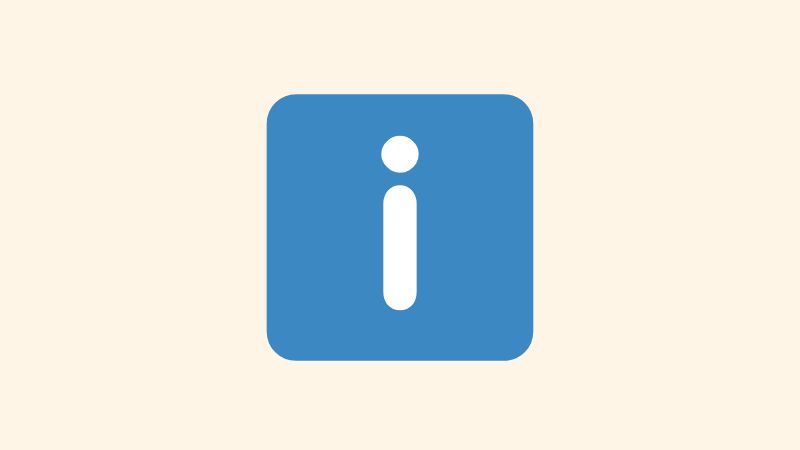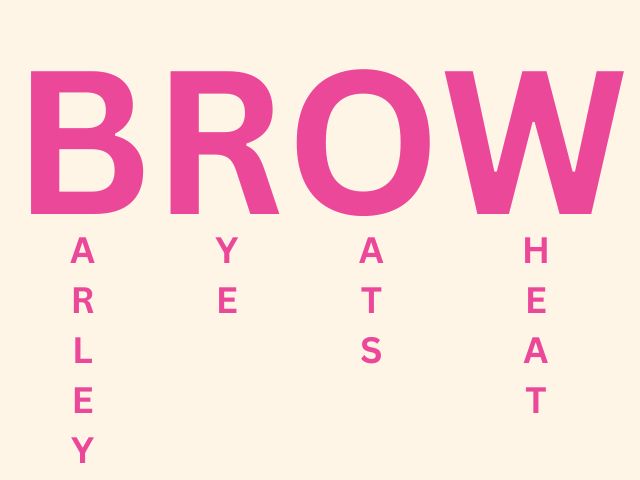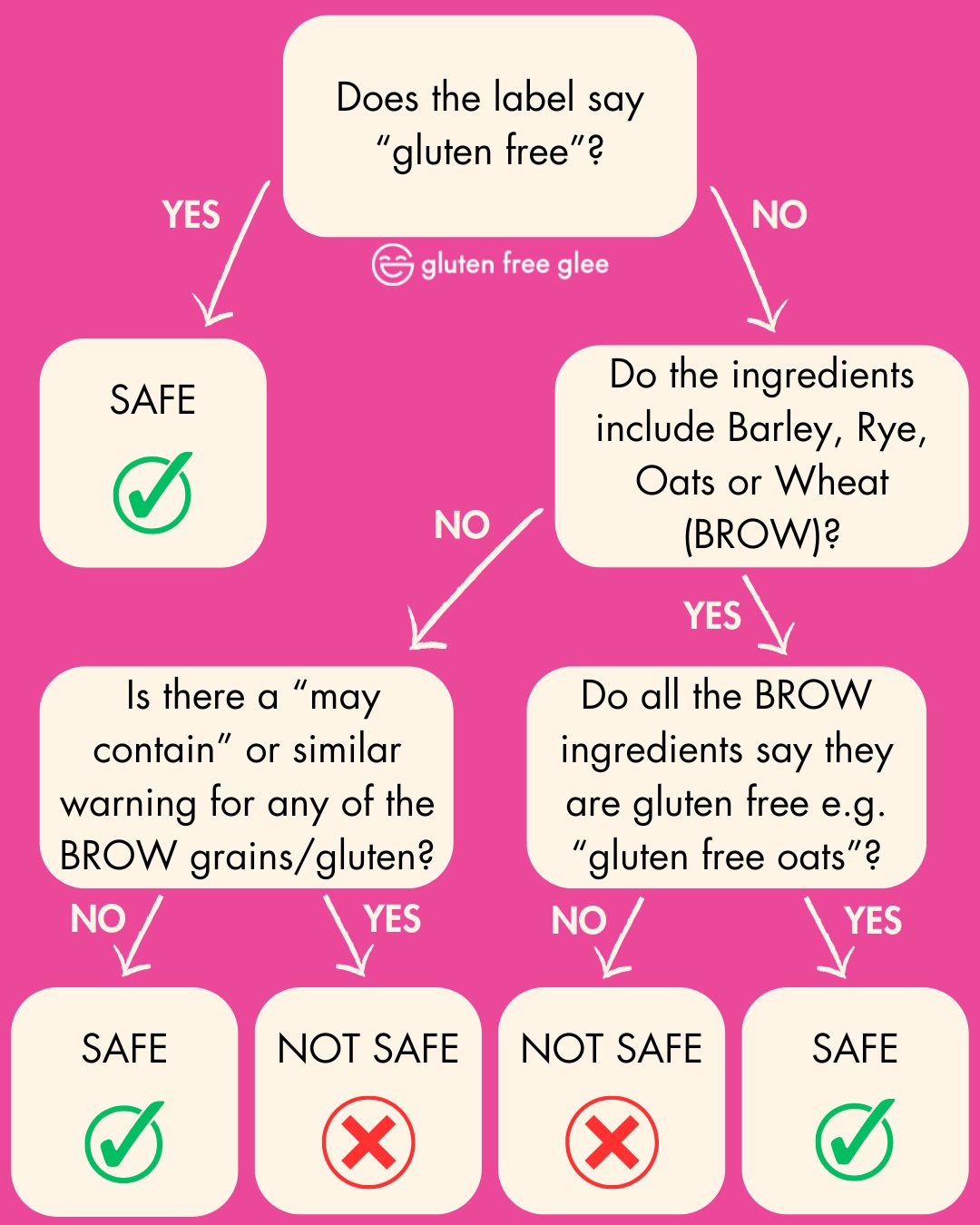The Basics & BROW
Understanding the key to reading labels and what ingredients to look out for


Fast Facts:
⚡ Learning to read UK food labels is actually quite simple, especially the more you get used to it
⚡ Look out for the BROW ingredients to identify gluten sources
⚡ Gluten cannot be hidden and has to be declared and highlighted on packaging
⚡ There are a few exceptions to the BROW rule where the gluten is either removed or reduced to below 20 ppm making it safe for those who need to avoid gluten
⚡ 'May contain' statements on food packaging are warnings used by manufacturers to indicate the possible presence of allergens due to cross-contamination. If you have coeliac disease, it's strongly advised to avoid products with a 'may contain gluten' warning.
⚡ Learn to read labels rather than relying on apps
🤨 The BROW Rule
Reading food labels can feel overwhelming when you're first diagnosed with a gluten-related condition, but remembering the simple acronym ‘BROW’ will get you 90% of the way there.

BROW stands for Barley, Rye, Oats, and Wheat - the four gluten-containing grains and the ingredients to look out for on food labels. You won't see 'gluten' listen as an ingredient, it must be named by its source (like wheat).
Although oats are naturally gluten free, they are often contaminated with gluten through growing, transporting, or processing alongside wheat, barley, or rye. This is why standard oats aren't safe for people with coeliac disease - and in some cases those with a gluten intolerance or wheat allergy - unless specifically labelled gluten free.
👩🏽⚖️ UK Labelling Laws
Under UK law, food packaging must clearly highlight any of the 14 major allergens, including gluten, no matter how small the amount. That means that gluten cannot be hidden in an ingredients list and reading labels is easy once you get the hang of it - if it's present, it will be easy to spot.
👉🏻 Read more about labelling regulations
🚩 The Exceptions
There are a few key exceptions to the BROW rule. Sometimes you'll see BROW ingredients listed in gluten free products - that's because they've been specially processed to remove or reduce gluten to below 20 parts per million (ppm), which is legally classed as gluten free. Here are two key examples:
🌾 Gluten Free Wheat
Although wheat naturally contains gluten, it can be specially processed to remove the gluten. These products are safe for people with coeliac disease or a gluten intolerance but not safe for those with a wheat allergy or intolerance, as they still contain other wheat proteins.
👉🏿 Read more about gluten free wheat here
🍻 Barley Malt Vinegar
Some foods containing barley malt vinegar or barley malt extract can still be labelled gluten free if the gluten has been reduced to under 20 ppm. You may notice this in products like Sarson's vinegar, Branston pickle and most gluten free beers.
👉🏼 Read more about gluten free barley malt extract and vinegar here
❓ How to Know if a Product is Gluten Free

1️⃣ Look for a gluten free statement or symbol
This is a legally protected term - any product labelled gluten free must contain less than 20 ppm of gluten, which is safe for those who are gluten free and coeliac. If it says gluten free, you don't need to read further unless you have a wheat allergy or intolerance to other proteins found in BROW grains - then you need to check for these.
2️⃣ No gluten free label? Check the ingredients for BROW
If none of the BROW grains are listed, move onto the next step
3️⃣ Look for 'may contain' warnings
These statements indicate possible cross-contamination. If you have coeliac disease, it's safest to avoid anything with a 'may contain' warning for gluten. If you are gluten intolerant, you may choose to eat products with a ‘may contain’ warning.
4️⃣ Check for certified gluten free forms of BROW ingredients
If a product does contain one of the BROW ingredients, check that it's gluten free - for example, if a product contains oats, it must specify 'gluten free oats' to be considered safe
The flow chart above is a great way to follow steps to determine if a product is gluten free and safe for someone with coeliac disease.
🥣 Gluten Free Oats & Avenin Sensitivity
About 5-10% of people with coeliac disease also react to avenin, a protein found in oats - even when they're certified gluten free. If you fall into this group, you'll need to avoid all oat-containing products. The same goes for those with allergies to the grain itself (e.g. wheat allergy), not just the gluten.
👉🏽 Read more about avenin intolerance here
⚠️ May Contain Warnings
'May contain' statements are used when there's a risk of cross-contamination during production. For coeliacs, even a tiny amount of gluten can trigger an autoimmune response and cause gut damage - so it's best to avoid these products entirely. Those with an intolerance can be more flexible and decide whether to consume products with a 'may contain' warning based on their personal experience with symptoms.
Even though these warnings are technically voluntary, most manufacturers include them when there's a real risk.
👉🏻 Read more about cross-contamination and precautionary labelling
🚫 Understanding Gluten Free Labelling Standards
In the UK, for a product to be labelled 'gluten free', it must undergo specific testing to comply with Codex Alimentarius standards to ensure it contains less than 20 ppm of gluten. This threshold is set based on scientific research indicating it is a safe level for most people with coeliac disease or gluten intolerance.
👉🏾 Read more about gluten free statements and the Crossed Grain symbol here
✅ Trust Labels over Apps
Apps that scan barcodes to check if a product is gluten free can seem helpful - but they often cause more confusion than clarity. Here's why:
- 😒 They rely on third-party data (like supermarket websites) which may be outdated or incorrect
- 😒 Rather than saying 'unknown', some apps categorise products as 'unsafe' to be cautious. That's when people end up scanning random items like Evian water or a certified gluten free product getting incorrect ‘unsafe’ results - that’s when panic sets in
- 😒 And worst of all, some apps might miss real risks if a product's recipe has changed
- 😒 Apps can trap people into feeling like they have to rely on barcode scanners to live a safe gluten free life
The bottom line: Barcode apps aren’t always accurate - and they can increase anxiety. The best thing you can do is learn to confidently read labels yourself. Once you get used to it, you’ll realise it’s not nearly as complicated as it first seems.
🎯 Quick Recap
Reading food labels might seem overwhelming at first, but once you understand the BROW rule and how gluten is legally labelled, things get much easier. Look for gluten free labels or symbols, double-check for BROW ingredients, and be cautious with ‘may contain’ warnings. Apps can be a handy backup, but your eyes and knowledge are your most reliable tools. With a bit of practice, navigating gluten free shopping becomes second nature.